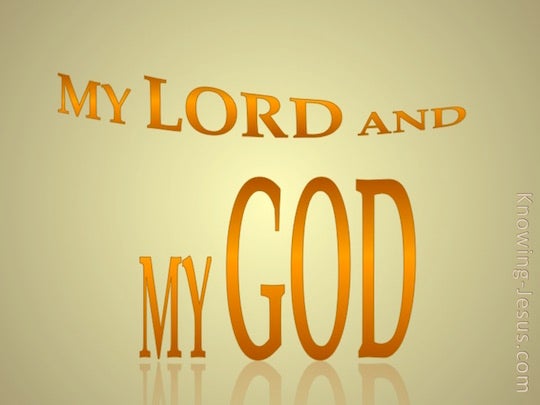The amazing Gospel of John, sometimes referred to as the “Spiritual Gospel,” often lifts us into the heavenlies. It is an awesome view of Christ Jesus that opens with the divine genealogy of Jesus as the “Word” who was with God and was God. It also contains many analogies that are made as “I AM” declarations that provide an understanding of Jesus’ ministry.
It is different from the synoptic Gospels (Matthew, Mark, Luke) in many ways. It omits much of what the other Gospels cover and covers some things the other Gospels omit.
One striking event that we find only in the synoptic Gospels is when Jesus questioned His disciples, “Who do you say that I am?” along with Peter’s response, “You are the Messiah.” [Matthew 16:15-16, Mark 8:29, Luke 9:20)
John records a different response of the ultimate declaration of who Jesus is. We find that in John 20.
Following the resurrection, Jesus appeared to the disciples. They were gathered together behind locked doors in fear of the Jews. Suddenly Jesus was among them. He showed them His hands and His side, and it says, “the disciples rejoiced when they saw the Lord.”
Unfortunately, one of the disciples was missing. Thomas (called “Twin) was not with them when Jesus came. He heard what the others said about Jesus’ visit, but he proclaimed, “If I don’t see the mark of the nails in His hands, put my finger into the mark of the nails, and put my hand into His side, I will never believe.”
He wanted to see and touch what the others had seen. After eight days, Jesus came again and gave Thomas his desire. Upon seeing Jesus, it is Thomas’ response that is the summit of John’s Gospel. “My LORD and my God!”
We call him “Doubting Thomas.” Yet his revelation of the true nature of Jesus stands out from the other Gospel’s account of the resurrection. The other Gospels recount the events of the resurrection, they report of the joy of His followers and record Jesus’ instructions, but only Thomas proclaims Jesus as Who He truly is.
“Our LORD and our God!”

